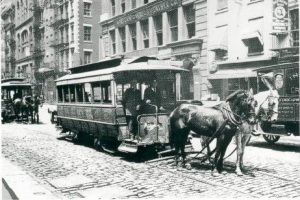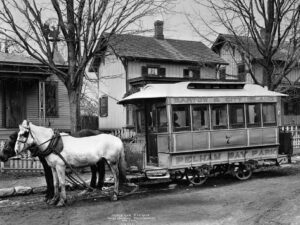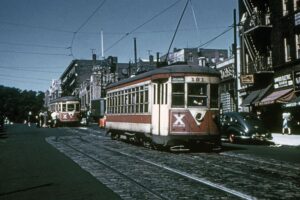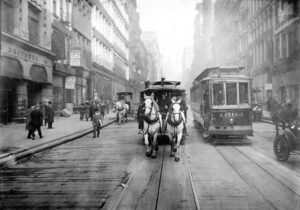
 These days, we all know what mass transit is. It’s about taking a trip on a plane, train, ship, or even a bus. Certainly, trains existed prior to 1832, but they were not designed for cross-town travel back then. On November 14, 1832, all that changed when the New York and Harlem Railroad in New York City introduced the nation’s first horse-drawn streetcar. The streetcar service was launched on the Bowery and Fourth Avenue in Manhattan, spanning from Prince to 14th Street, and with that, it became the city’s inaugural mass transit system. The fare for a ride was set at 12.5 cents.
These days, we all know what mass transit is. It’s about taking a trip on a plane, train, ship, or even a bus. Certainly, trains existed prior to 1832, but they were not designed for cross-town travel back then. On November 14, 1832, all that changed when the New York and Harlem Railroad in New York City introduced the nation’s first horse-drawn streetcar. The streetcar service was launched on the Bowery and Fourth Avenue in Manhattan, spanning from Prince to 14th Street, and with that, it became the city’s inaugural mass transit system. The fare for a ride was set at 12.5 cents.
The streetcar was named “John Mason” after the President of Chemical Bank, a prosperous New York businessman and railroad co-founder who financed its creation. It was essentially a horse-drawn bus with seating for about a dozen passengers. However, as reported by the New York Herald, this did not deter people from crowding in, “People are packed into streetcars like sardines in a box, with perspiration for oil. The seats being more than filled, the passengers are placed in rows down the middle, where they hang on by the straps, like smoked hams in a corner grocery.” No one thought about the problems, and in fact dangers of overcrowding, and as it turns out those dangers did not materialize anyway, so the ride, overcrowding and all, was a beloved pastime.
Horse-drawn carriages had always existed in New York City, but the omnibus was different because it ran along a designated route and was a more affordable option. “Omni” meant the bus carried everyone and anyone. The ride was cushioned with steel springs, but wheels were solid metal and wood. I can imagine the rough ride its passengers must have experienced, and the amount of effort needed by the draft animals to pull the oversize coaches along New York City’s cobblestone, unfinished, and litter-strewn streets. While riding was a trick sometimes, getting off was just as strange. To signal their desire to disembark from the large stagecoach, passengers would pull on a leather strap connected to the driver’s ankle. Imagine how annoying that constant pulling on the ankle must have been for the driver. I suppose he got used to it, but to me it seems like it would be a huge annoyance.
The next step took over 50 years, but in 1883, New York saw its first steam-powered streetcar, which replaced 
 the horse-drawn omnibus. From there, change was rapid. By 1909, electric trolleys were introduced to the city. Even the local baseball team got in on the streetcar craze. Baseball historians tell of the Brooklyn Dodgers, originally the “Trolley Dodgers,” who earned their name because the borough’s baseball team fans quite often had to navigate through busy streetcar traffic.
the horse-drawn omnibus. From there, change was rapid. By 1909, electric trolleys were introduced to the city. Even the local baseball team got in on the streetcar craze. Baseball historians tell of the Brooklyn Dodgers, originally the “Trolley Dodgers,” who earned their name because the borough’s baseball team fans quite often had to navigate through busy streetcar traffic.


Leave a Reply